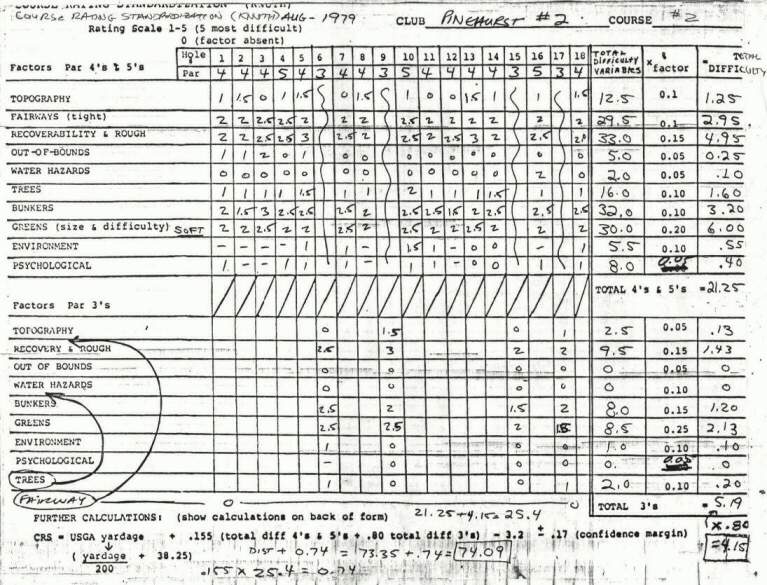|
The Knuth Course Rating System - New Ratings: More to Golf Than Yardage
Fred Merrick
Sunday San Jose Mercury News April 24, 1977, page 124
Northern California Golf Association is introducing something new in its method of rating golf courses belonging to the association.
The course rating standardization system was introduced to representatives of 57 clubs last week at Almaden Country Club. Following a brief seminar, the group toured the course, which will be used for qualifying for both the U.S. Open and the U.S. Amateur later this summer. Consensus of eight-man teams whose scorecards were tabulated Thursday gave Almaden a 72.84 rating from the championship tees and 70.95 from the regular blocks. The old ratings were 70.5 and 69.4 respectively.
Official ratings will be announced after all of the rating reports from the entire group are run through a computer.
The course rating system differs from the U.S. Golf Association's policy, which is based on straight yardage. The USGA formula is to divide the overall length of the course (in yards) by 200 and add 38.25. By this method, Almaden would have a championship rating of 72.45. By the same formula, Pebble Beach would have a rating of under 72. The NCGA rates it 75, toughest in Northern California.
"Our present golf course rating technique is somewhat subjective and often generates a wide variance between raters in hole-by-hole ratings." said Richard Ghent, association president. "The large number of rating team members which we have helps us greatly in meeting the large demands of our association, but makes rating consistency difficult because of everyone's different impression of golf course difficulty."
Lt. Dean Knuth, a computer analyst and student at the Naval Postgraduate School in Monterey developed an accurate and analytical step-by-step rating procedure so that course ratings can be based on set standards to improve rating accuracy.
That procedure was introduced last week, and was used to supplement the yardage formula of the USGA.
The system breaks down the non-distance factors of scoring difficulty for a scratch golfer into variables such as topography, fairways, rough and recoverability, out of bounds, water hazards, trees, bunkers, greens, environmental factors and psychological factors.
Each factor is weighted on its relative importance in making a hole difficult. Each hole is rated on a 0-to-5 scale with zero indicating the factor is non-existent and 5 representing maximum difficulty. Raters were given examples of holes on various Northern California golf courses to show degree of difficulty. An example of a 5 rating for rough and recoverability--which would mean impossible recovery or an unplayable lie for a missed fairway or green--were the first five holes at Spyglass Hill. Examples of a 5 rating for water hazards were the 16th at Cypress Point and the 18th at Pebble Beach.

|






